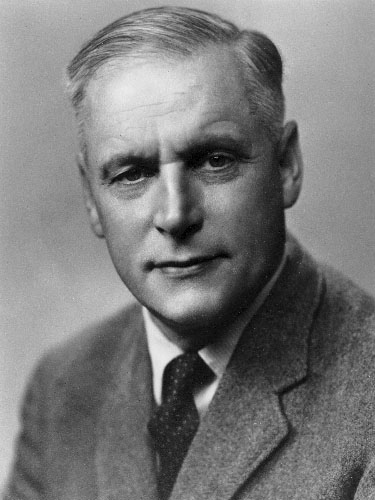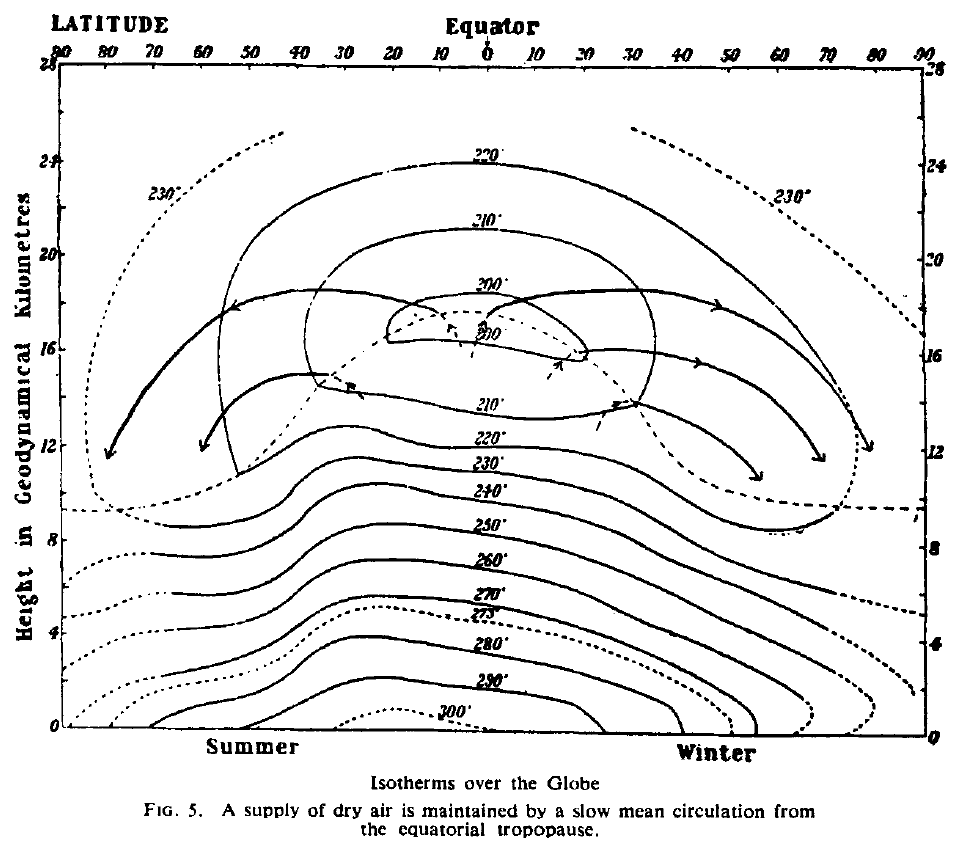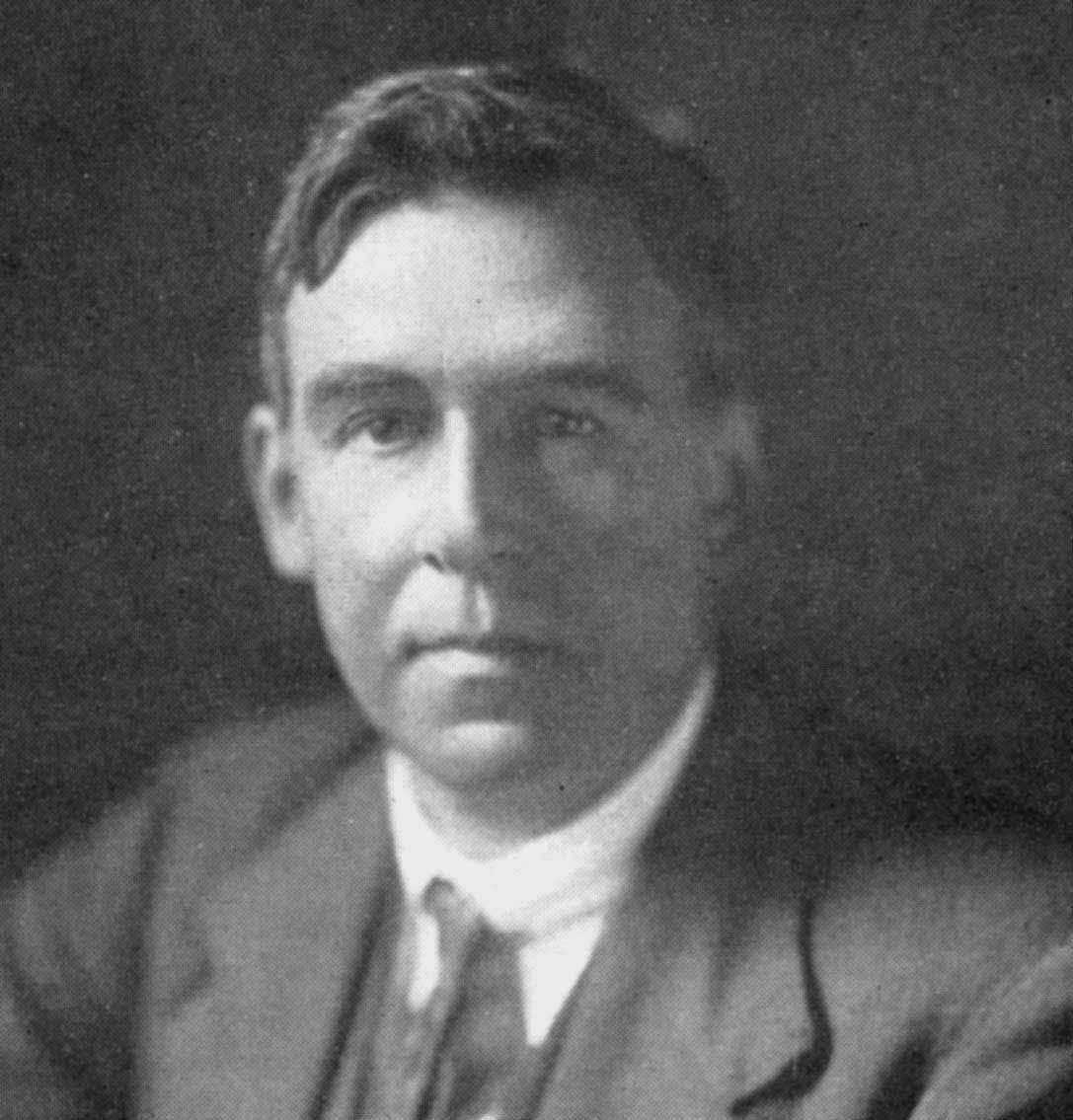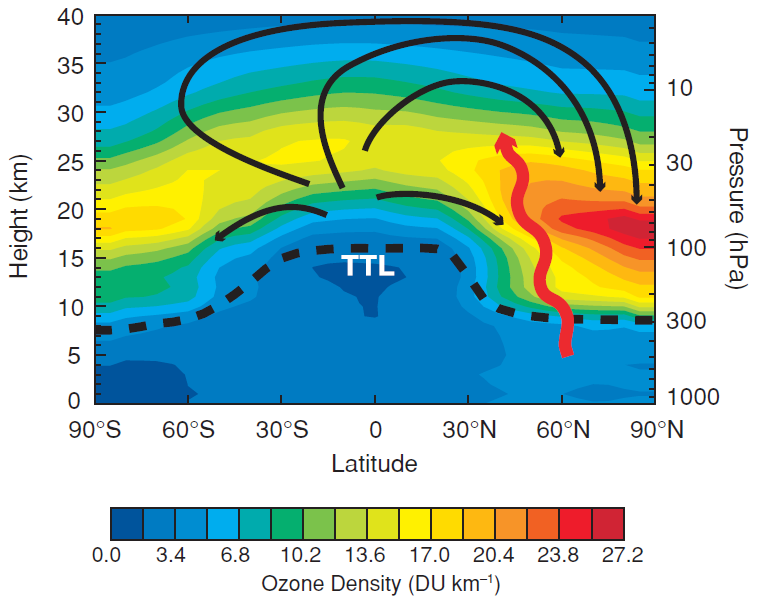Brewer-Dobson circulation
for comments/suggestions/questions please contact me at thomas'at'atmos'dot'colostate'dot'edu
historical remarks
Many more details than described below can be found in Alan Brewer's "The stratospheric circulation: A personal history" in SPARC newsletter 15.
The story of the discovery of the Brewer-Dobson circulation serves as a great example of how crucial the historical setting at the time of the discovery can be. Brewer, working for the U.K. Met Office (with supervision by Dobson) during World War II, was in charge to investigate why high-altitude aircraft did not leave condensation trails even though trails were expected by the available theory at the time. Understandably, condensation trails were an unwanted phenomenon revealing flight tracks to the enemy. What Brewer needed were accurate measurements of temperature and frost point at flight altitude, and especially the latter proved difficult (and remains difficult to date).
Brewer eventually was able to obtain measurements that were accurate enough and he recalls: "... we got into the stratosphere. To my surprise, as the temperature turned up, the frost point turned down, and at the highest levels I could get no deposit ... it was clear that the reason that there were no [condensation] trails in the stratosphere was that the air was exceedingly dry. I would not have believed before I had started that the air could be so dry, but I saw it with my own eyes. I had plenty of trouble with people convincing them that we could really measure that dryness." These observations were presented by Dobson in his 1945 Bakerian Lecture to the Royal Society.
 |  | Left: Alan W. Brewer. Right: Brewer's depiction of his envisioned circulation (from his 1949 paper). |
Brewer then came up with an ingenious "prediction"/interpretation of this observed dryness at mid-latitudes (Brewer 1949): he concluded that the "... dryness is maintained by a slow circulation of the air in which air rises at the equator, moves poleward in the stratosphere, and then descends into the troposphere in temperate and polar regions ...". He therefore essentially described what we now call the Brewer-Dobson circulation.
Interestingly, Dobson described the possibility of such a circulation as early as 1929, based on ozone column measurements (Dobson et al. 1929): "The only way in which we can reconcile the observed high ozone concentration in the Arctic in spring and the low concentration in the tropics ... would be to suppose a general slow poleward drift in the highest atmosphere with a slow descent of air near the poles ...". However, Dobson discarded this possibility (he didn't have vertical ozone profiles which would have given him much clearer evidence), and he remained very doubtful that such a circulation can really exist until the late 1950's.
 |  | Left: Gordon M. B. Dobson. Right: Ozone cross section from satellite data that clearly shows the pile-up of ozone in the high-latitude lower stratosphere due to the Brewer-Dobson circulation (from IPCC/TEAP special report, 2005). |
It did not take very long until the Brewer-Dobson circulation made a real societal impact. Radioactive debris from the nuclear tests by the U.S. in the tropical Pacific, even though deposited into the tropical stratosphere and believed to stay in the stratosphere for many years, got transport poleward and downward back into the troposphere where it got quickly mixed down to the surface (as had been predicted by Brewer).